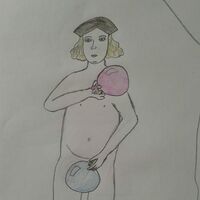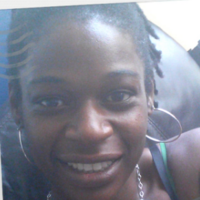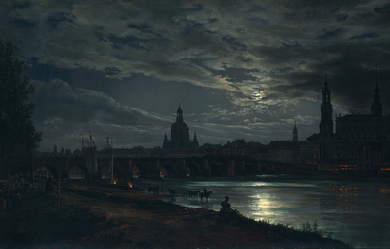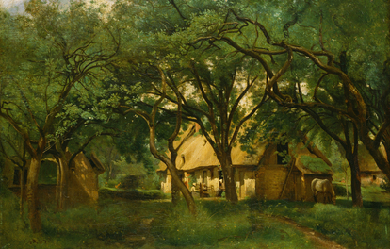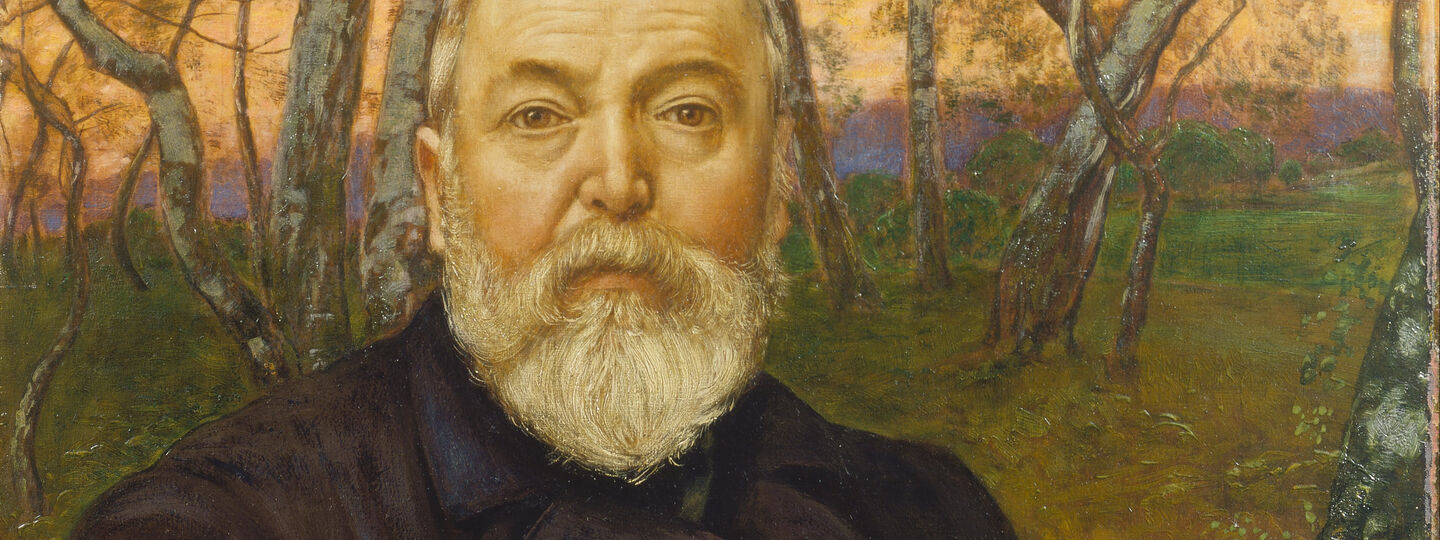
Info
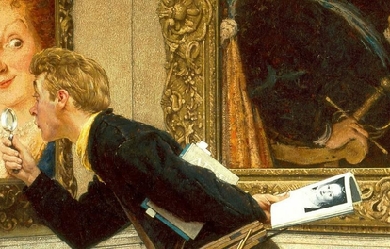

Karl Jay Shapiro (November 10, 1913– May 14, 2000) was an American poet. He was appointed the fifth Poet Laureate Consultant in Poetry to the Library of Congress in 1946. Biography Karl Shapiro was born in Baltimore, Maryland and graduated from the Baltimore City College high school. He attended the University of Virginia before World War II, and immortalized it in a scathing poem called “University,” which noted that “to hate the Negro and avoid the Jew is the curriculum.” He did not return after his military service. Karl Shapiro, a stylish writer with a commendable regard for his craft, wrote poetry in the Pacific Theater while he served there during World War II. His collection V-Letter and Other Poems, written while Shapiro was stationed in New Guinea, was awarded the Pulitzer Prize for Poetry in 1945, while Shapiro was still in the military. Shapiro was American Poet Laureate in 1946 and 1947. (At the time this title was Consultant in Poetry to the Library of Congress which was changed by Congress in 1985 to Poet Laureate Consultant in Poetry to the Library of Congress.) Poems from his earlier books display a mastery of formal verse with a modern sensibility that viewed such topics as automobiles, house flies, and drug stores as worthy of attention. In 1963, the poet/critic Randall Jarrell praised Shapiro’s work: Karl Shapiro’s poems are fresh and young and rash and live; their hard clear outlines, their flat bold colors create a world like that of a knowing and skillful neoprimitive painting, without any of the confusion or profundity of atmosphere, of aerial perspective, but with notable visual and satiric force. The poet early perfected a style, derived from Auden but decidedly individual, which he has not developed in later life but has temporarily replaced with the clear Rilke-like rhetoric of his Adam and Eve poems, the frankly Whitmanesque convolutions of his latest work. His best poem—poems like “The Leg,” “Waitress,” “Scyros,” “Going to School,” “Cadillac”—have a real precision, a memorable exactness of realization, yet they plainly come out of life’s raw hubbub, out of the disgraceful foundations, the exciting and disgraceful surfaces of existence. In his later work, he experimented with more open forms, beginning with The Bourgeois Poet (1964) and continuing with White-Haired Lover (1968). The influences of Walt Whitman, D. H. Lawrence, W. H. Auden and William Carlos Williams were evident in his work. Shapiro’s interest in formal verse and prosody led to his writing multiple books on the subject including the long poem Essay on Rime (1945), A Bibliography of Modern Prosody (1948), and A Prosody Handbook (with Robert Beum, 1965; reissued 2006). His Selected Poems appeared in 1968. Shapiro also published one novel, Edsel (1971) and a three-part autobiography simply titled, “Poet” (1988–1990). Shapiro edited the prestigious magazine, Poetry for several years, and he was a professor of English at the University of Nebraska-Lincoln, where he edited Prairie Schooner, and at the University of California, Davis, from which he retired in the mid-1980s. His other works include Person, Place and Thing (1942), (with Ernst Lert) the libretto to Hugo Weisgall’s opera The Tenor (1950), To Abolish Children (1968), and The Old Horsefly (1993). Shapiro received the 1969 Bollingen Prize for Poetry, sharing the award that year with John Berryman. He died in New York City, aged 86, on May 14, 2000. More recent editions of his work include The Wild Card: Selected Poems Early and Late (1998) and Selected Poems (2003). Shapiro’s last work, Coda: Last Poems, (2008) was recently published in a volume organized posthumously by editor Robert Phillips. The poems, divided into three sections according to love poems to his last wife, poems concerning roses, and other various poems, were discovered in the drawers of Shapiro’s desk by his wife two years after his death. Awards * Jeanette S Davis Prize and Levinson prize, both from Poetry in 1942 * Contemporary Poetry prize, 1943 * American Academy of Arts and Letters grant, 1944 * Guggenheim Foundation fellowships, 1944, 1953 * Pulitzer Prize in poetry, 1945, for V-Letter and Other Poems * Shelley Memorial Prize, 1946 * Poetry Consultant at the Library of Congress (United States Poet Laureate), 1946–47 * Kenyon School of Letters fellowship, 1956–57 * Eunice Tietjens Memorial Prize, 1961 * Oscar Blumenthal Prize, Poetry, 1963 * Bollingen Prize, 1968 * Robert Kirsch Award, LA Times, 1989 * Charity Randall Citation, 1990 * Fellow in American Letters, Library of Congress Bibliography Poetry collections * * Adult Bookstore (1976) * Collected Poems, 1940–1978 (1978) * Essay on Rime (1945) * New and Selected Poems, 1940–1987 (1988) * Person, Place, and Thing (1942) * Place of Love (1943) * Poems (1935) * Poems 1940-1953 (1953) * Poems of a Jew (1950) * Selected Poems (Random House, 1968) * Selected Poems (Library of America, 2003), edited by John Updike. * The Bourgeois Poet (1964) * The Old Horsefly (1993) * The Place of Love (1943) * Trial of a Poet (1947) * V-Letter and Other Poems (1945) * White Haired Lover (1968) * The Wild Card: Selected Poems, Early and Late (1998) * Coda: Last Poems (2008) Autobiography * * Poet: Volume I: The Younger Son (1988) * Reports of My Death (1990) * Poet: An Autobiography in Three Parts (Chapel Hill: Algonquin Books, 1988–1990) Essay collections * * The Poetry Wreck (1975) * To Abolish children and Other Essays (1968) * A Primer for Poets (1965) * In Defense of Ignorance (1960) * Randall Jarrell (1967) * Start With the Sun: Studies in the Whitman Tradition, with James E. Miller, Jr., and Bernice Slote (1963) * Prose Keys to Modern Poetry (1962) Novels * * Edsel (1971) Secondary sources * * Lee Bartlett, Karl Shapiro: A Descriptive Bibliography 1933-1977 (New York: Garland, 1979) * Gail Gloston, Karl Shapiro, Delmore Schwartz, and Randall Jarrell: The Image of the Poet in the Late 1940s (Thesis: Reed College, 1957) * Charles F. Madden, Talks With Authors (Carbondale: Southern Illinois U. Press, 1968) * Hans Ostrom, "Karl Shapiro 1913-2000" (poem), in The Coast Starlight: Collected Poems 1976-2006 (Indianapolis, 2006) * Joseph Reino, Karl Shapiro (New York: Twayne, 1981) * Stephen Stepanchev, American Poetry Since 1945: A Critical Survey (1965) * Melvin B. Tolson, Harlem Gallery (1965), with an introduction by Karl Shapiro * Sue Walker, ed., Seriously Meeting Karl Shapiro (Mobile: Negative Capability Press, 1993) * William White, Karl Shapiro: A Bibliography, with a note by Karl Shapiro (Detroit: Wayne State U. Press, 1960) References Wikipedia—https://en.wikipedia.org/wiki/Karl_Shapiro
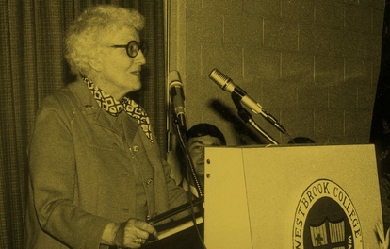
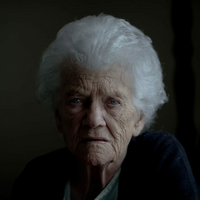
May Sarton is the pen name of Eleanore Marie Sarton ( (May 3, 1912– July 16, 1995), an American poet, novelist and memoirist. Biography Sarton was born in Wondelgem, Belgium (today a part of the city of Ghent). Her parents were science historian George Sarton and his wife, the English artist Mabel Eleanor Elwes. When German troops invaded Belgium after the assassination of Archduke Franz Ferdinand in 1914, her family fled to Ipswich, England, where Sarton’s maternal grandmother lived. One year later, they moved to Boston, Massachusetts, where her father started working at Harvard University. She went to school in Cambridge, Massachusetts, graduating from Cambridge High and Latin School in 1929. She started theatre lessons in her late teens, but continued writing poetry. She published her first collection in 1937, entitled Encounter in April. In 1945 in Santa Fe, New Mexico, she met Judy Matlack, who became her partner for the next thirteen years. They separated in 1956, when Sarton’s father died and Sarton moved to Nelson, New Hampshire. Honey in the Hive (1988) is about their relationship. In her memoir At Seventy, Sarton reflected on Judy’s importance in her life and how her Unitarian Universalist upbringing shaped her. She was elected a Fellow of the American Academy of Arts and Sciences in 1958. Sarton later moved to York, Maine. In 1990, she suffered a stroke, severely reducing her ability to concentrate and write. After several months, she was able to dictate her final journals, starting with Endgame, with the help of a tape recorder. She died of breast cancer on July 16, 1995, and is buried in Nelson, New Hampshire. Works and themes Despite the quality of some of her many novels and poems, May Sarton’s best and most enduring work probably lies in her journals and memoirs, particularly Plant Dreaming Deep (about her early years at Nelson, ca. 1958-68), Journal of a Solitude (1972-1973, often considered her best), The House by the Sea (1974-1976), Recovering (1978-1979) and At Seventy (1982-1983). In these fragile, rambling and honest accounts of her solitary life, she deals with such issues as aging, isolation, solitude, friendship, love and relationships, lesbianism, self-doubt, success and failure, envy, gratitude for life’s simple pleasures, love of nature (particularly of flowers), the changing seasons, spirituality and, importantly, the constant struggles of a creative life. Sarton’s later journals are not of the same quality, as she endeavoured to keep writing through ill health and by dictation. Although many of her earlier works, such as Encounter in April, contain vivid erotic female imagery, May Sarton often emphasized in her journals that she didn’t see herself as a “lesbian” writer, instead wanting to touch on what is universally human about love in all its manifestations. When publishing her novel Mrs. Stevens Hears the Mermaids Singing in 1965, she feared that writing openly about lesbianism would lead to a diminution of the previously established value of her work. “The fear of homosexuality is so great that it took courage to write Mrs. Stevens Hears the Mermaids Singing,” she wrote in Journal of a Solitude, “to write a novel about a woman homosexual who is not a sex maniac, a drunkard, a drug-taker, or in any way repulsive, to portray a homosexual who is neither pitiable nor disgusting, without sentimentality ...” After the book’s release, many of Sarton’s works began to be studied in university level women’s studies classes, being embraced by feminists and lesbians alike. However, Sarton’s work should not be classified as 'lesbian literature’ alone, as her works tackle many deeply human issues of love, loneliness, aging, nature, self-doubt etc., common to both men and women. Margot Peters’ controversial biography (1998) revealed May Sarton as a complex individual who often struggled in her relationships.
Write a summary of your life? That's a tough thing to do when there is so much to life. So much to do, to be, to explore. My life is and always has been complicated, but I have discovered that positivity is the way forward...to look ahead and on the brighter side of life...and something my loving partner has taught me ...to be grateful for what I have in my life, even if its just the tiniest thing. I have been writing poetry since my school years and I also write my own songs and music too. I believe being able to express yourself through words, art or music is a necessity to our lives and helps bring out the best in us and all we want to achieve. My poems can be quite dark, and some also sexual in nature, but I relate everything I write to experiences in my life so far and its my way of expressing myself in a positive way. Everyone has their own likes and dislikes, but I hope my poems inspire your thoughts as others have inspired mine. Sarrettaa
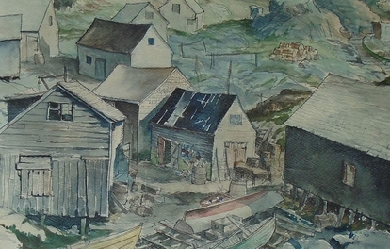
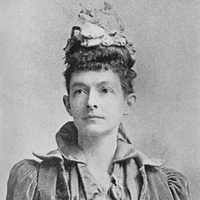
Susan Frances Harrison née Riley (February 24, 1859– May 5, 1935) (a.k.a. Seranus) was a Canadian poet, novelist, music critic and music composer who lived and worked in Ottawa and Toronto. Life Susie Frances Riley was born in Toronto of Irish-Canadian ancestry, the daughter of John Byron Riley. She studied music with Frederic Boscovitz, at a private school for girls in Toronto, and later in Montreal. She reportedly began publishing poetry, in the Canadian Illustrated News, at 16 under the pseudonym “Medusa.” After completing her education, she worked as a pianist and singer. In 1880 she married organist John W. F. Harrison, of Bristol, England, who was the organist of St. George’s Church in Montreal. The couple had a son and a daughter. The Harrisons lived in Ottawa in 1883, when Susie Harrison composed the song “Address of Welcome to Lord Lansdowne” to celebrate the first public appearance of the new Governor General, the Marquess of Lansdowne. In 1887 the Harrisons moved to Toronto, where John Harrison became organist and choirmaster of St. Simon the Apostle, and Susan Harrison began a literary career under the pseudonym “Seranus” (a misreading of her signature, “S. Frances”), soon publishing articles in “many of the leading journals and periodicals.” She wrote a number of songs published in the United States and England under the name Seranus, and published other songs in England under the name, Gilbert King. She was the music critic of The Week from December 1886 to June 1887 under her pen-name of Seranus. She wrote the “Historical sketch on Canadian music” for the 1898 Canada: An Encyclopedia of the Country. Susan Harrison was considered an authority on folk music, and often lectured on the subject. She used traditional Irish melodies in her String Quartet on Ancient Irish Airs, and French-Canadian music in her 1887 Trois Esquisses canadiennes (Three Canadian Sketches), ‘Dialogue,’ ‘Nocturne,’ and 'Chant du voyageur’. She also incorporated French-Canadian melodies in her three-act opera, Pipandor (with libretto by F.A. Dixon of Ottawa). Her String Quartet on Ancient Irish Airs, is likely the first string quartet composed in Canada by a woman. In 1896 and 1897 she presented a series of well-received lectures in Toronto on "The Music of French Canada. For 20 years Harrison was the principal of the Rosedale branch of the Toronto Conservatory of Music. During the 1900s she contributed to and edited the Conservatory’s publication Conservatory Monthly, and contributed to its successor Conservatory Quarterly Review. She wrote the article on “Canada” for the 1909 Imperial History and Encyclopedia of Music. In addition, she wrote at least six books of poetry, and three novels. Writing Poetry Harrison’s musical training is reflected in her poetry: “she was adept in her handling of the rhythmic complexities of poetic forms such as the sonnet and the villanelle. Like other Canadian poets of the late nineteenth century, her prevailing themes include nature, love, and patriotism. Her landscape poetry, richly influenced by the works of Charles G.D. Roberts and Archibald Lampman, paints the Canadian wilderness as beguilingly beautiful yet at the same time mysterious and distant.” Harrison was a master of the villanelle. The villanelle was a French verse form that had been introduced to English readers by Edmund Gosse in his 1877 essay, “A Plea for Certain Exotic Forms of Verse”. Novels Her two novels “articulate a fascination with a heavily mythologized Quebec culture that Harrison shared with many English-speaking Canadians of her time... characterized by a gothic emphasis on horror, madness, aristocratic seigneurial manor houses, and a decadent Catholicism.” “Harrison writes elegiacally of a regime whose romantic qualities are largely the creation of an Upper Canadian quest for a distinctive historical identity.” Recognition Harrison experienced a decline in reputation in her lifetime. In 1916 anthologist John Garvin called her “one of our greater poets whose work has not yet had the recognition in Canada it merits.”. "By 1926, Garvin describes her merely as 'one of our distinctive poets’.” The Dictionary of Literary Biography wrote of Susan Frances Harrison, in 1990, that “Harrison’s unpublished work has not been preserved, her published work is out of print and difficult to obtain, and her once-substantial position in the literary life of her country is now all but forgotten.” Publications Selected songs * Song of Welcome. * Pipandor. opera * ‘Trois Esquisses canadiennes: ’Dialogue,' ‘Nocturne,’ 'Chant du voyageur’. 1887. * Quartet on Ancient Irish Airs. Poetry * Four Ballads and a Play. Toronto: Author, 1890. * Pine, Rose and Fleur De Lis. Toronto: Hart, 1891. * In Northern Skies and Other Poems. Toronto: Author, 1912. * Songs of Love and Labor. Toronto: Author, 1925. * Later Poems and New Villanelles. Toronto: Ryerson, 1928. * Penelope and Other Poems. Toronto: Author, 1934. * Bibliographical information on poems from Wanda Campbell, Hidden Rooms. Prose * Crowded Out and Other Sketches. Ottawa: Evening Journal, 1886. * The Forest of Bourg-Marie, novel. Toronto: G.N. Morang, 1898. * Ringfield, novel. London: Hodder & Stoughton, 1914. Edited * Canadian Birthday Book. Toronto: Robinson, 1887. Poetry anthology. Articles * “Historical sketch of music in Canada,” Canada: An Encyclopedia of the Country, vol 4, J.C. Hopkins ed., Toronto, 1898. * “Canada,” The Imperial History and Encyclopedia of Music, vol 3: History of Foreign Music, W.L. Hubbard ed., New York ca 1909. Discography * Harrison’s piano music has been recorded and issued on media, including: * Keillor, Elaine. By a Canadian Lady Piano Music 1841-1997 Carleton Sound * Keillor, Elaine. Piano Music by Torontonians (1984) References Wikipedia—https://en.wikipedia.org/wiki/Susie_Frances_Harrison

hello my name is tamika starks aka 4-play. I'm a 32 year old poet from buffalo New York , I've been writing since my mother died when I was 11. I've been doing the spoken word scene for the 7 years. I love poetry and it's pretty much the one thing I have control of all the time!!

Hey I was away for awhile traveling finding my inner self, but I am back so message me or Facebook me if you have question or just need a a really good friend to listen cause I'm that guy. :) updated 6/24/15 I am very initiative guy who has a lot if emotions to expose and I really want to get my words out there to help anybody in need and just remember your smile brings more smiles but when your sad you makes everybody else sad if anybody needs serious help help please contact me cause I will listen and to my honest beat to help you cause if I share my love you will to so smile :)

My name is Deborrah Ann Stenberg. I currently reside in Billings, Montana. I have been an adamant writer of children's stories and poetry throughout most of my life and I'm always honored to be involved with such dedicated achievers. Whether it's a hobby, profession, or a dream come true, we should never give up on what's important in life, and continue to practice all the things we do best. Then commend ourselves daily for rewarded success, and appreciate each noted achievement.
A highly ambitious writer and entrepreneur always in search of new challenges. Edward has nearly two decades of experience working on Wall Street within the executive search business. He contributes to professional industry magazines and spends time blogging. Over the course of his writing career he has been published in EfinancialCareers, Bloomberg, Integrity Research, and Benzinga. Edward is from Springfield, IL and graduated from Arizona State University in 2003 where he studied Politcal Science and Creative Writing. He studied poetry under Norman Dubie and Alberto Rios. Today Edward manages a small consulting practice, hosts a podcast on Spotify called "The Poetry Everywhere" and writes poetry.
Poetry and poetic thinking/feeling have been a part of my life since my teens in the 60s. I think it was even before that, but I did not know how to express it. I live a life of self-awareness and have had the fortune to do so for many decades now. I look forward to the discovery, pressing the edge of the known into the glorious adventure of the Unknown. Want to come along for the ride? We can share the driving...

Hey everyone, I'm Erik. I've been writing poetry for about 10 years now, but I started to take it serious about a year and a half ago. A lot of my works are personal/have personal beliefs attached to them, I also want to shake things up a bit with my writing. I hope you like what I have to offer, and if you want to know any thing else find me on facebook or twitter (Skaarcia Vega) @Erik_Skaarnes.
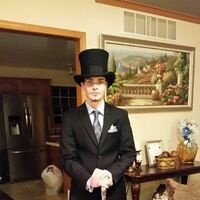
I'm young but I am old, I've lived through a lot of experiences and have done a lot of things I enjoy ready a news paper with a cup of tea by myself, I love to listen to classical music, in my spare time I like to write bout how I feel and what comes to mind. And I would like feedback on what the public thinks of what I have to say...

hey my name is smitty. i was born in the United States. i am an only child. Family and Friends is all i care about no matter what the circumstances are. I love to explore new places and to just meet new people and learn about the different cultures there are. im very energetic and full of love says the people i meet. sometimes my dad says im to nice but in my case when your nice to the right people they could make your day. the way i write poetry expresses what i am not only as a person but also what i am feeling in my heart. poetry comes from what you are feeling inside.

Hello my name is jasmine smith and i am a christian poet. for many years i have been writing poetry which was a therapy for my healing as a teenager. i endured so many changes and tragedies that the git of writing was my god given gift to share his love and his teachings. i am a southern girl from GEORGIA a small town called Dublin, Ga. i hope and pray that the things i write and speak are touching to you and brings you some type of positive vibe..







